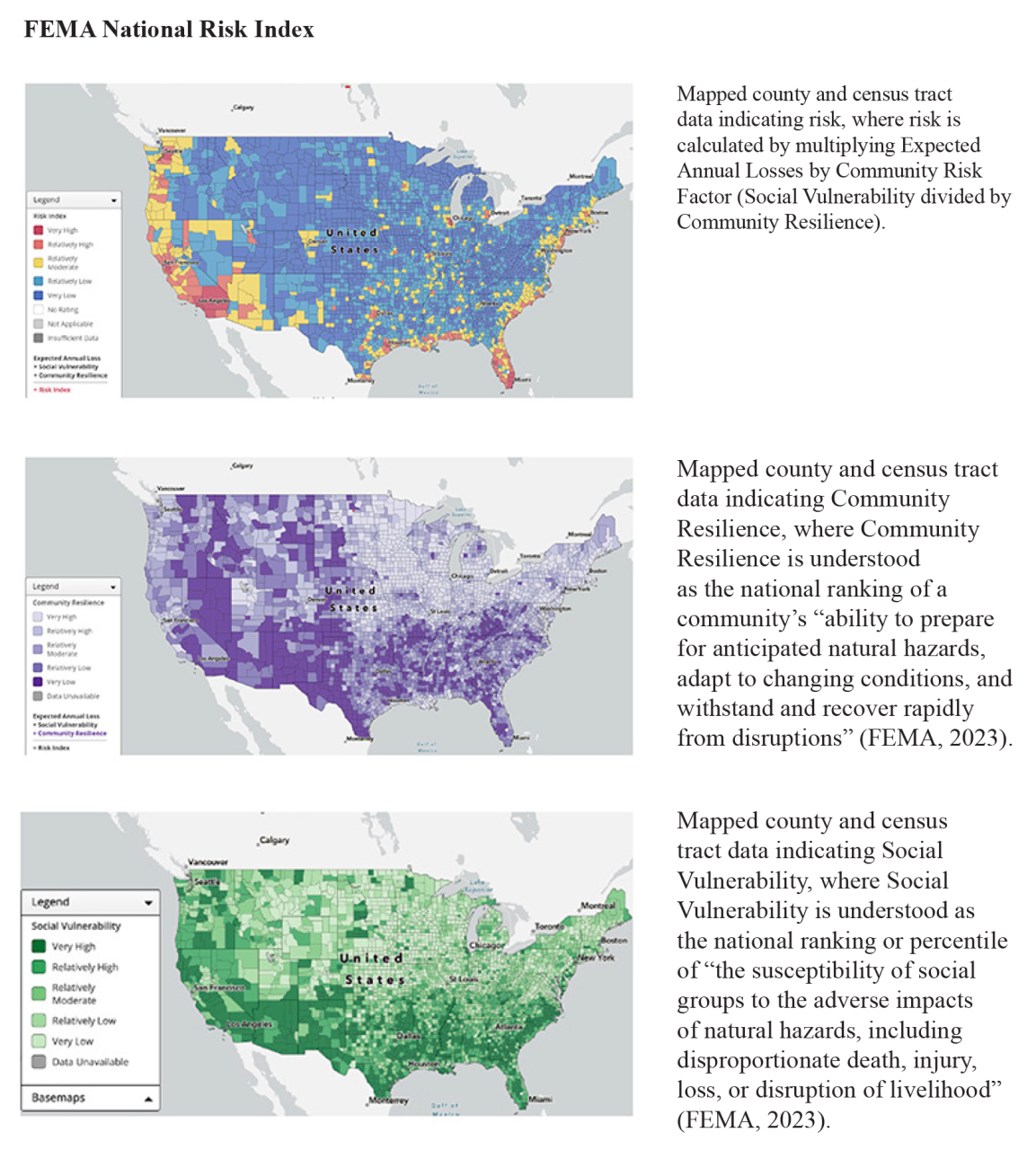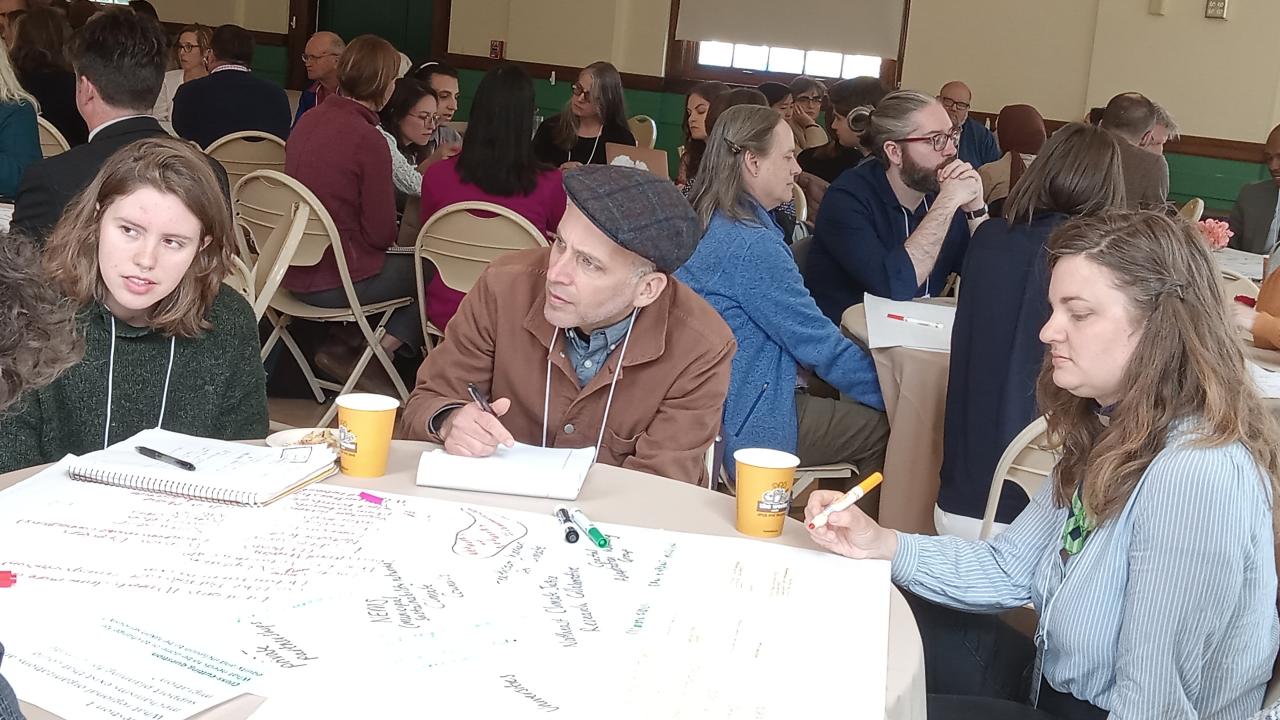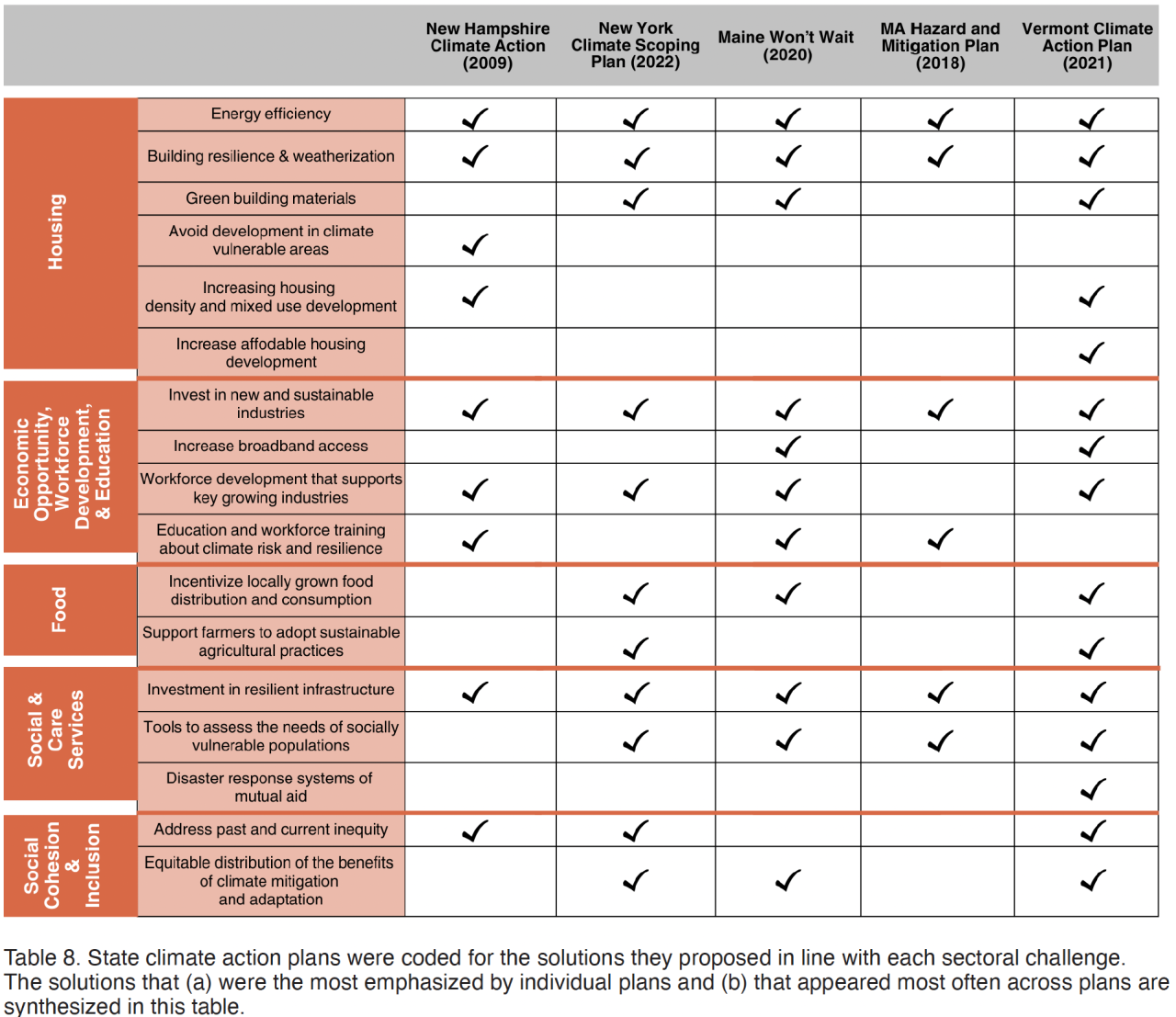A Northeast Safe and Thriving for All (NEST)
2022-2023
Image

A Northeast Safe and Thriving for All (NEST) examines the potential for and implications of climate-exacerbated migration to and within the Upper Northeast. The project, funded by a one-year planning grant from the National Oceanographic and Atmospheric Administration (NOAA) Climate Adaptation Partnerships (CAP) program, explored how a CAP would help the region navigate climate impacts and societal transitions, with a focus on migration. It is a highly interdisciplinary team that built a partnership across multiple universities and organizations across the Northeast. This planning grant led to a successful proposal to create a CAP for the Upper Northeast; however, the project was not funded by Congress in 2024-2025.
Project Overview
Image

Motivations
A Northeast Safe and Thriving for All (NEST) examines the potential for and implications of climate-exacerbated migration to and within the Upper Northeast
Key findings
Environmental risks and disasters are one of many reasons – especially jobs and family – that motivate people to move. The Northeast must address drivers of existing vulnerability – especially housing supply, quality, and affordability – while anticipating changing demographic trends.
Roadmap for an Upper Northeast Climate Adaptation Partnership (CAP)
We see an opportunity for a regional Climate Adaptation Partnership to help the Upper Northeast build sufficient affordable, accessible, safe, efficient, and resilient housing; adapt current economic development strategies; and welcome new in-migrants.
DRIVERS AND POTENTIAL OF CLIMATE MIGRATION IN THE U.S.
Image

The United States’ vast geography and its longitudinal and latitudinal location, make it prone to a multitude of disasters. Their combined effects have already begun to shape perceptions about which U.S. geographies are marginally safer and more habitable. Compared to climate outlooks projected for the rest of the United States, the Northeast is often perceived as an attractive place to live climatically in years to come. It has an abundance of fresh water resources and lower annual temperatures will likely continue to attract populations seeking out relatively safer and more habitable destinations.
Nor is migration a new phenomenon in the Northeast. The historic and contemporary movement, displacement, and (re)settlement of people in, out of, and across the region has contributed to shifts in population and demographics for centuries. These migratory fluxes indicate that the Northeast is capable of accommodating more people, but that demographic change has always brought with it the social and economic challenges in housing, jobs, and social inclusion. Our project sought to ask practitioners across the region - what they thought would be the greatest impacts of climate migration in the region.
SYNTHESIS OF REGIONAL WORKSHOPS
Image

To answer this question, we conducted four stakeholder listening sessions across the region: (1) the Vermont and New Hampshire Upper Connecticut River Valley; (2) Coastal Maine and New Hampshire; and Upstate New York’s Rust Belt communities in (3) Buffalo and (4) Rochester, Binghamton, Syracuse, Albany, Ithaca, and the Hudson Valley. The regional session allowed for a close examination of cross-cutting similarities and differences between places regardless of jurisdictional boundaries, revealing trends in community challenges and opportunities, migration flows, and climate stressors. Aside from collecting important information about the current and future challenges and opportunities facing the region, stakeholder workshops intended to lay the groundwork for network building and information sharing about climate preparedness and accommodating new populations.
THE NORTHEAST'S CLIMATE ADAPTATION POLICY LANDSCAPE
Image

We also conducted a review of state level policies climate migration preparedness that were identified by stakeholders. We systematically reviewed the plans for their discussion of (1) climate migration and (2) the intersectional sectoral issues identified in NEST stakeholder engagement sessions. While all plans are considered guiding legislative frameworks for climate action, states vary in the extent to which they have created enforceable targets and measurable goals in support of the climate plans’ intentions. Due to time and capacity constraints, we did not analyze the extent to which state legislation in other sectors such as housing, transportation, and economic development, discuss climate change or climate migration impacts or the additional climate legislation that has followed some climate plans in order to address gaps or bolster implementation.
Roadmap for a Climate Adaptation Partnership in the Upper Northeast


